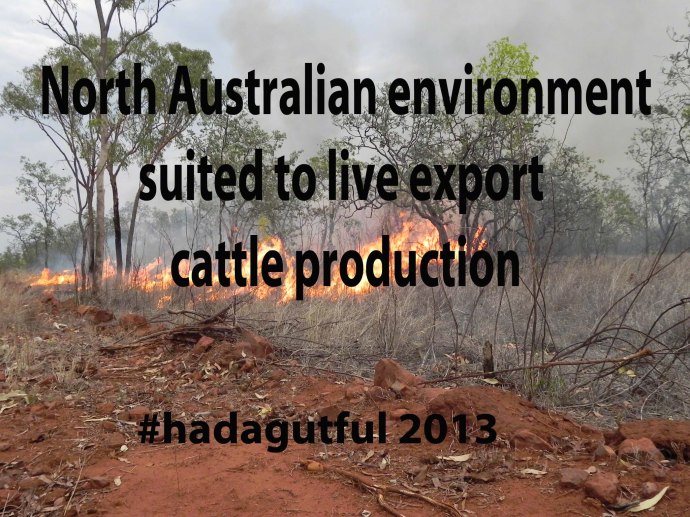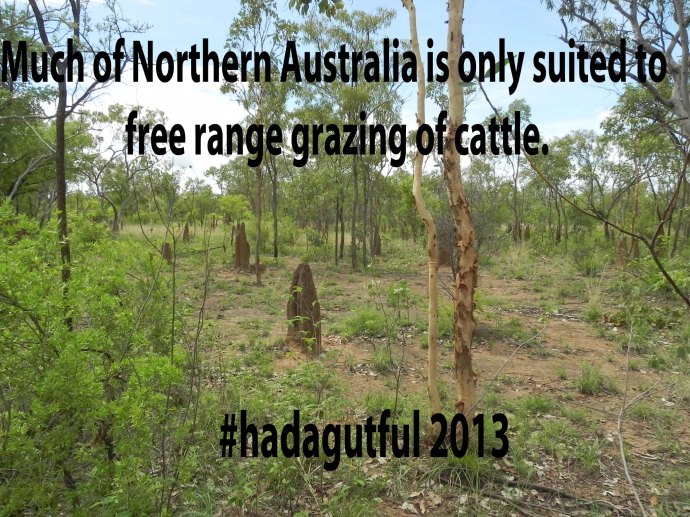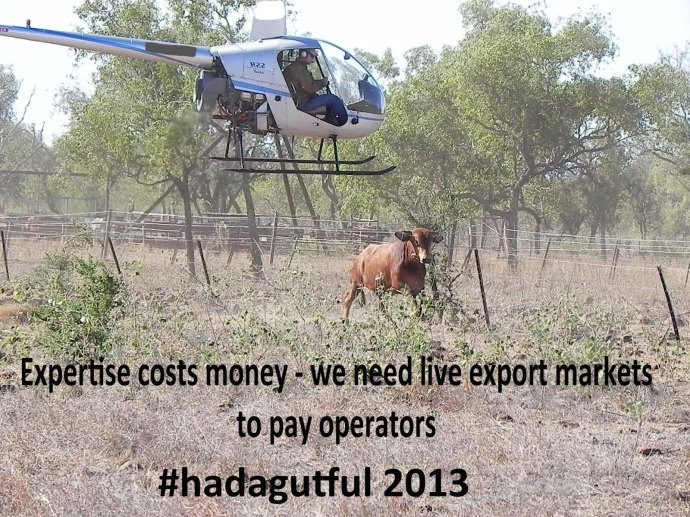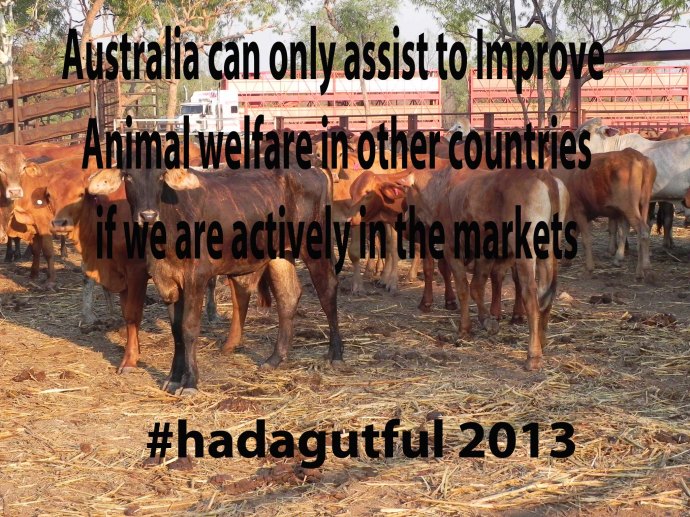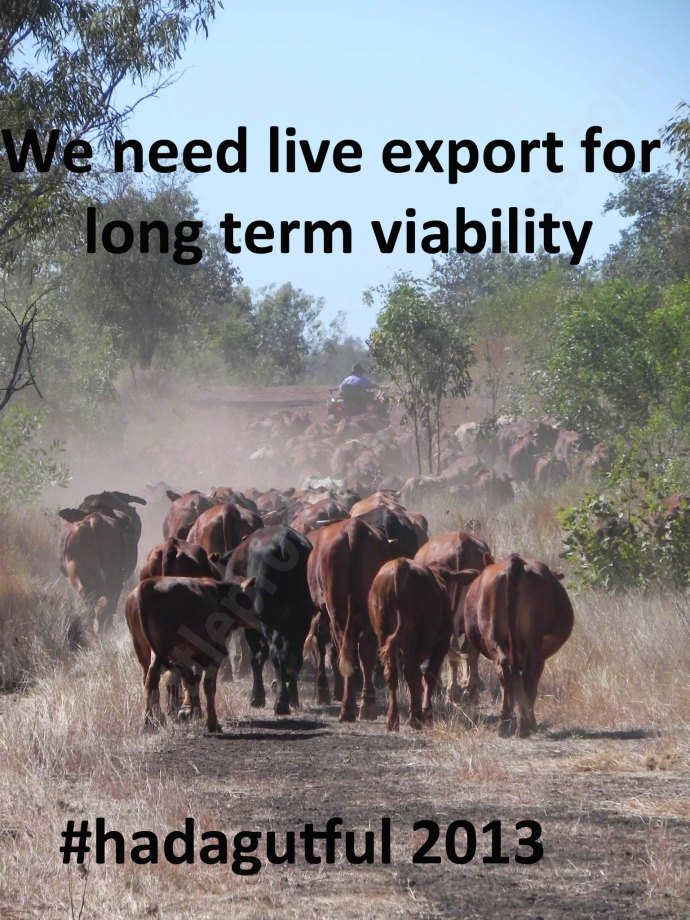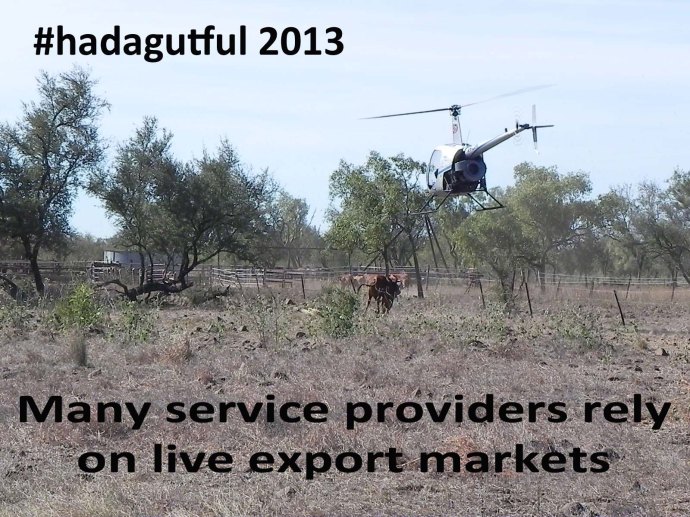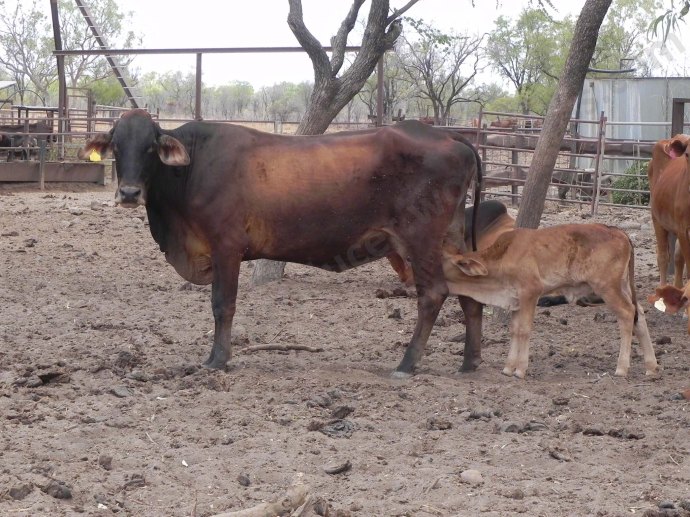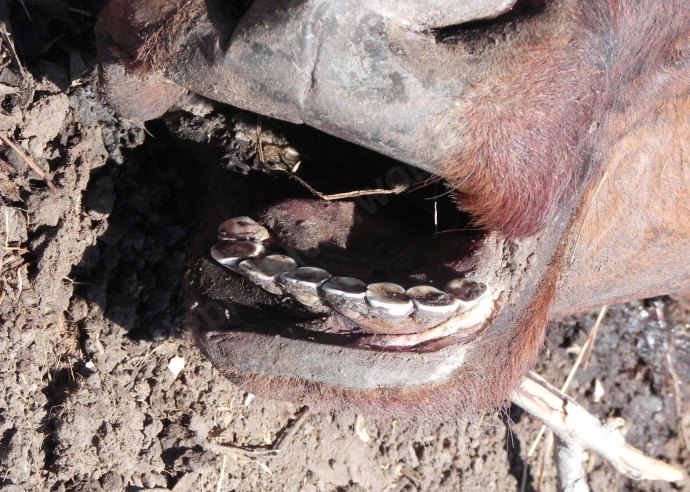Animal Welfare
Working with Indonesia
A friend who is working in Indonesia with Indonesian stockpeople is assisting in providing training, education, resources and advice to them to improve animal welfare outcomes. Part of her job is also to help ensure that ESCAS is complied with. I haven’t been to Indonesia to see these facilities for myself. Yet.
She has kindly supplied some of the photos in this article. The information in this article is also from other people who I have spoken to and live in Indonesia working in the cattle import industries. It is because of the direct involvement of these people and their commitment, including their employers that animal welfare in Indonesian slaughter houses has greatly improved and continue to as people practice their skills and refine their techniques. Irrefutably the people who have learnt better animal handling skills in their employment with these Australians have then used that knowledge to improve handling and health for their own small family herds and community herds that they may be involved in.
After unloading of the cattle from the boats, most cattle spend several months in the feedlots. There they will consume by-products of Agriculture that are great for fattening cattle. Indonesia has an abundance of high volume – low cost feeds suitable for this such as palm leaves and corn stalks. These items are placed in a chopper and then fed to the animals.
 This is a group of people receiving animal handling training. It is imperative that when unloading a shipment of cattle with many thousands of animals that people are aware of the requirements and processes they must adhere to ensure efficency and compliance. This not only improves animal welfare but human safety as well.
This is a group of people receiving animal handling training. It is imperative that when unloading a shipment of cattle with many thousands of animals that people are aware of the requirements and processes they must adhere to ensure efficency and compliance. This not only improves animal welfare but human safety as well.
 The bunting feed trough in the feedlot. Water would also be available and the floors cleaned periodically. As most of these feedlots have cement floors a thick layer of sawdust is laid over the floors for comfort of the animals. When the yards are cleaned out the manure and floor covering is then used for fertiliser in plantations.
The bunting feed trough in the feedlot. Water would also be available and the floors cleaned periodically. As most of these feedlots have cement floors a thick layer of sawdust is laid over the floors for comfort of the animals. When the yards are cleaned out the manure and floor covering is then used for fertiliser in plantations.
 These men are receiving training on the maintenance and upkeep of a pneumatic stunner. The installation of these items is a great advancement for animal welfare. The simple act of the Indonesian people learning the repair and maintenance skills of this equipment themselves is an important aspect of animal welfare improvement
These men are receiving training on the maintenance and upkeep of a pneumatic stunner. The installation of these items is a great advancement for animal welfare. The simple act of the Indonesian people learning the repair and maintenance skills of this equipment themselves is an important aspect of animal welfare improvement
 The animals head is in a head bail – the black frame around his neck and he is about to be stunned to be slaughtered.
The animals head is in a head bail – the black frame around his neck and he is about to be stunned to be slaughtered.
Once stunned unconcious he will drop and as he does the side gate to the right will be opened, as soon as he rolls to the side his throat will be cut and he will be bled, at which point he dies. Each animal will have their individual RFID tag scanned and recorded to ensure the animals traceability.
 This animal is also held in a head bail to be stunned, on which the person who’s hand is visible to the right will open up the door to allow the animals body to fall to the floor and have his throat cut.
This animal is also held in a head bail to be stunned, on which the person who’s hand is visible to the right will open up the door to allow the animals body to fall to the floor and have his throat cut.
 This is an abattoir facility in Indonesia, after bleeding the animal is processed on the floor. Note the covered race-way so the animals can’t see what is ahead of them. This assists in keeping the animals as relaxed as possible. The Door that swings on the crush, above the ramp is also covered in to the bottom to stop any one from rope casting.
This is an abattoir facility in Indonesia, after bleeding the animal is processed on the floor. Note the covered race-way so the animals can’t see what is ahead of them. This assists in keeping the animals as relaxed as possible. The Door that swings on the crush, above the ramp is also covered in to the bottom to stop any one from rope casting.
 This is an Indonesian wet meat market. Many people prefer to buy their meat still warm to the touch and the meat hanging here would have only been killed a few hours before. The culture of the people who prefer wet markets believe the freshness of the meat is dictated by its warmth rather as opposed to our societies view that fresh is chilled.
This is an Indonesian wet meat market. Many people prefer to buy their meat still warm to the touch and the meat hanging here would have only been killed a few hours before. The culture of the people who prefer wet markets believe the freshness of the meat is dictated by its warmth rather as opposed to our societies view that fresh is chilled.
Some Australian companies and others who are established in Indonesia have assisted Indonesian slaughterhouses to install stunners for their sole use in that abattoir in their supply lines. These facilities have also received assistance by Australian importers with lairages ( the yards through which the cattle move) and the boxes/head bails that the animals are placed in prior to stunning. Each full installation costs approximately $50,000 Australian dollars. Some exporters have a large number of abattoirs in their approved supply lines.
Locals have seen benefits in the use of the stunning equipment not only for animal welfare, the meat is not bruised or the animal isn’t stressed but for their own occupational health and safety. The efficency of some abattoirs has been greatly assisted by the stunners. To the point that Australian exporters are being asked to import more stunners to Indonesia to use in abattoirs that kill local cattle and not Australian cattle.
It is estimated that 98% of Australian animals are now pre-stunned prior to slaughter with some supply lines having 100% requirements for stunning of their own choosing.
Industry sources have quoted that an indirect employment ratio of 7 to 1 is due to Australian cattle imports. This includes people required to unload the ships, transport of cattle, feedlot staff, abattoirs, butchers and market labour such as people who may collect feedstuffs for consumption by the animals or are involved with the collection of the organic manure and yard waste. Indonesia has no welfare system, you don’t have a job there, then literally you don’t eat.
While importing slaughter animals Australians are also involved with breeding herd development in Indonesia. This sounds ironic that a country would want to help another breed up their herd rather than sell their own the realistic case is with Indonesia’s 240M population, topography and inaccessability of many islands the chance of it ever achieving self sufficency in beef herds is extremely remote. The Indonesian government also have a social policy that each company must help a community in some way, many importers of cattle do something with cattle to assist the local people, ie lending breeding cows, assisting with breeding programs and health problems of animals.
Some villages are totally reliant on the employment of a feedlot located in its area. It is estimated that 1M people in Indonesia were direcly affected when the Live export ban occured in 2011. With an average wage of $150 per month, some feedlots are estimated to support 100 families directly through employment which has flow on to another 700.
Australian Goat Industry
I have a couple of friends who are involved with the live export of goats from Australia. the importance of goat export has been a very much forgotten element of the live export debate with the most concentration on cattle and sheep. Management of Goats and Buffalo is important for diversification of income for the producers and often utilisation of the animal has important environment protection elements.
A goat producer who supplies Live export has kindly supplied supplied some of the photos and some are my own.
 My billy goat Rufus, A boer goat – RIP old Fella.
My billy goat Rufus, A boer goat – RIP old Fella.
 Goats exported live by sea and air – 2005-2012
Goats exported live by sea and air – 2005-2012
 Goats exported for Breeder purposes
Goats exported for Breeder purposes
 Rangeland goats utilised for live export
Rangeland goats utilised for live export
 Australian goat meat production – 100% exported.
Australian goat meat production – 100% exported.
 Source – Australian livestock export industry statistical review 2012.
Source – Australian livestock export industry statistical review 2012.
Australian live goats exported to Malaysia
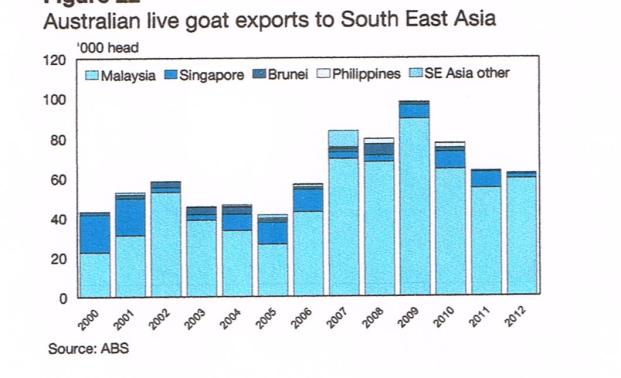 Source – Australian livestock export industry statistical review 2012
Source – Australian livestock export industry statistical review 2012
Australian live goat exports to South East Asia
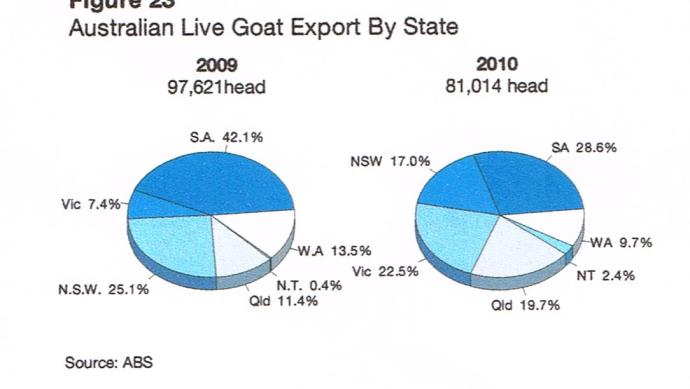 Source – DAFF Australian Livestock export statistical review 2010
Source – DAFF Australian Livestock export statistical review 2010
Australian live goat exports by state for 2009 & 2010
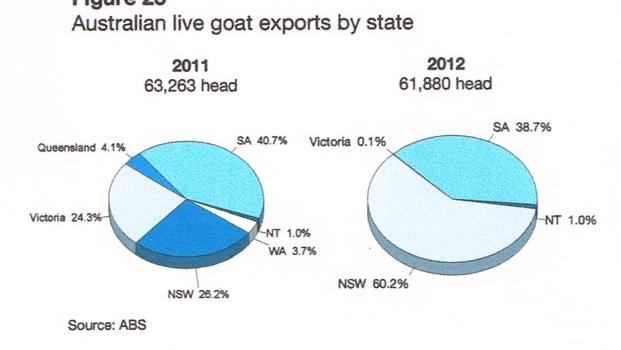 Source – DAFF Australian Livestock export statistical review 2012
Source – DAFF Australian Livestock export statistical review 2012
Australian live goat exports by state for 2011 & 2012
- Goats are a part of many grazing operations in Western NSW and QLD
- Australia is the biggest exporter of goats both live and meat in the world yet we don’t make it into the top 10 goat producers in the world
- Approximately 98% of all goats produced in Australia are exported. Australia does not consume much goat meat. Mores the pity because it is delicious!
- Goats are used as an Invasive Native Species control weapon. This method is sustainable and uses no chemicals or bulldozers.
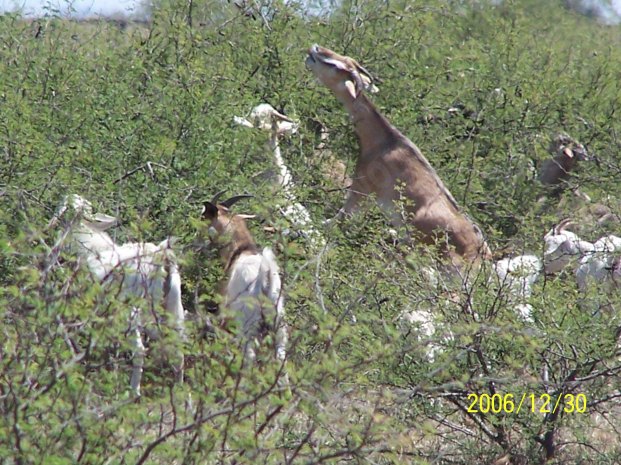 Goats keeping woody weeds and invasive plants under control
Goats keeping woody weeds and invasive plants under control
- Live export of goats is predominately done by airfreight
- Live export of goats provides market competition to the highly concentrated ownership of goat abattoirs in Eastern Australia
- Goats are ideally suited to the arid pastoral land of Western NSW and QLD
- Boer goats are being introduced to feral goat operations to create better carcass quality
- Currently Malaysia is the biggest market for goats, however the biggest opportunities are in China.
- Goats are browsers and do not rely on grass only for feed.
- Goats require large amounts of tannin, found in woody weeds, to digest their food.
- Goats live in families, it is common to see great grandmum, grandmum, mum and babies all running together.
- Male goats (bucks) will run together in groups until rutting/breeding time
- Horn length in goats is determined by genetics not age
- Wild dog control is imperative in a goat grazing operation.
- Feral pig control is imperative in a goat grazing operation
- Female goats (does) are excellent mothers
- Goats regularly have multiple births
- The majority of goats exported live or as meat is via Eastern Australia
Source – Livestock export review 2011 – Submission by Goat Industry council of Australia
An exert of a producers view in regards to the stopping of goat live exports
#hadagutful
 A banner made up for the first #hadagutful rally in 2012.
A banner made up for the first #hadagutful rally in 2012.
My husband and I operate a small cattle station south east of Katherine in the Roper Gulf, we supply animals to live export, they are bred for people to eat. We are a family concern with very simple aims, to make enough money to support ourselves without government reliance or financial assistance, to pay debts, replace machinery as needed and provide for the basic requirements of our family, animals and property. Our intention is to live and operate our property sustainably now and for the long term.
The live export ban hit us hard, not necessarily instantaneously financially but most certainly in regards to stress and personal worries. Financially it has been a slow creep, low stock demand, low prices etc, at the time of writing these are all looking much more positive. At one stage when the ban was announced (June 2011) I wondered if we were really looking at the beginning of the end of our cattle property ownership. How long could we last on our current reserves and at what point should we walk away, what would we have left. Without live export markets our property was virtually worthless, our animals would be sold domestically but in a market flooded with many others and then what! I assumed we would have to move to urban areas and find other work, possibly in mining, who knows, our family unit would certainly be broken up!
Due to our remoteness and my need to ‘do something’ after the ban I started a campaign of letter writing to politicians and through that started to look at facebook sites and cringe at the mis-information, accusations and downright attacks against producers, at that point targeting those who live exported but latter many directed at anyone who simply produced or used animals in Agriculture.
Our industry representative group the Northern Territory Cattleman’s Association (NTCA) called a crisis meeting on June 6 2011, which we attended. That same afternoon it was announced that Joe Ludwig (then Agriculture minister) had banned outright all live export of cattle to Indonesia. The announcement was I guess to 150-200 people, it was met with a stunned silence.
We had 300 cattle in a paddock intended for live export markets our only income budgeted for that year and it looked like they weren’t going anywhere. We wanted our animals pre-stunned, the leg casting and struggling we viewed on mishandling of cattle slaughtering and at times outright cruelty wasn’t on, it was bullshit and quiet honestly we were pissed off our animals would be treated that way. We wanted; no we demanded improvements in animal welfare practices in overseas markets for our cattle. That meeting of producers was unanimous, ‘no stun no deal’. Like I said we’re small, many others had cattle in the thousands and I know 3000 cattle were sitting in at least one pre-export yard outside of Darwin, the ship was actually in the wharf. All were now in limbo. Talk was trade wasn’t going to reopen until 2012. A thing called ESCAS was being developed, 2011 was assumed a write off. Trade did resume but very late in 2011, but the damage was done. We ended up only getting a small percentage of steers to live export due to competition and we sold others for a song just to maintain cash flow.
A few weeks after the ban NTCA organised a rally in Darwin, to call producers to attend and show their support. I was scared to be honest, I didn’t think many would go; It’s damn hard to drop everything and attend a function when running a place. I needn’t have worried, many travelled even further than us.
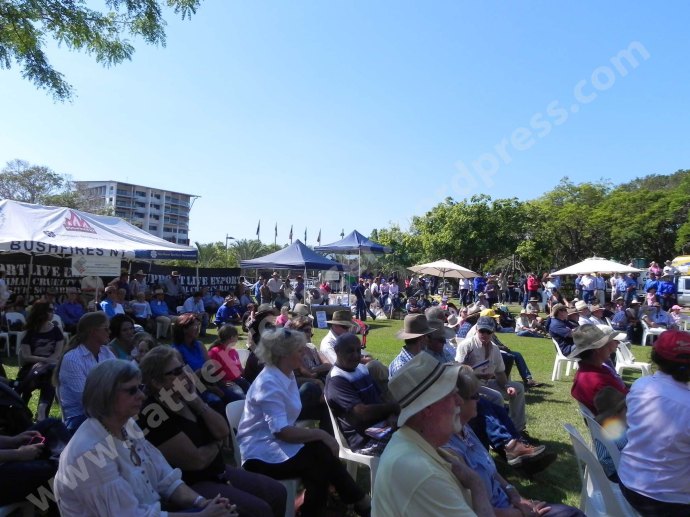 Darwin ‘Support live export, ban animal cruelty rally – June 2011
Darwin ‘Support live export, ban animal cruelty rally – June 2011
 Other members of the crowd gathered in Darwin ‘Support live export, ban animal cruelty’ rally – June 2011 It was probably then I truly began to appreciate the ramifications of a live export ban, where-as before I had only been concerned with our immediate problems. Now I realised the ripple effect went on and on and on. From producer to service providers, stock agents, truck companies, feed suppliers, even retail in the towns stopped. One cabinet maker said his phones stopped ringing the day the ban was announced. Everyone was going to pull in the belts, because we we’re shitting ourselves, The knee jerk of the Labor government to implement the ban treated those in the North like crap and quiet honestly showed they didn’t give a damn about us then and it seemed many in the urban areas didn’t care or realise our situation while others openly rejoiced in it and our assumed bankruptcy.
Other members of the crowd gathered in Darwin ‘Support live export, ban animal cruelty’ rally – June 2011 It was probably then I truly began to appreciate the ramifications of a live export ban, where-as before I had only been concerned with our immediate problems. Now I realised the ripple effect went on and on and on. From producer to service providers, stock agents, truck companies, feed suppliers, even retail in the towns stopped. One cabinet maker said his phones stopped ringing the day the ban was announced. Everyone was going to pull in the belts, because we we’re shitting ourselves, The knee jerk of the Labor government to implement the ban treated those in the North like crap and quiet honestly showed they didn’t give a damn about us then and it seemed many in the urban areas didn’t care or realise our situation while others openly rejoiced in it and our assumed bankruptcy.
My anger, indignation at the mis-information, intention that if I could support better animal welfare practices I would and need to tell our story got the better of me and I started on the facebook site ‘Save Live Export’, from that site I have become friends with people like Michael Trant, organiser of the #hadagutful rally, so many others who I hope to meet face to face one day, but have never met one of them yet. Very few are friends in the Katherine area though I’ve had the chance to meet some here. There is absolutely no doubt in the early days of the ban all these people were a lifeline for me, they gave support, friendship and comradeship. That support is highly treasured and invaluable to this day. They also made me see that ‘sulking’ wasn’t going to help, I could go in and bat to fight for what I believed. That better animal welfare is possible and attainable in live export or get the hell out. So with my computer and internet overload in meltdown I have tried to get my story, views and information out there. One good thing, is I don’t watch much TV anymore. I write, read and research instead.
I continue with the blog, facebook and support of others in Agriculture now because I believe these the Agricultural people are generally good, honest, caring people, and I’m proud of their and my families achievements throughout the years.
I have come to realise I have a quirky interest in the finite details of stats and facts, to me they tell a story, I just have to find them and connect them to enable, I hope empowerment to others to use if they wish. I can’t help but wonder that if I had some of the information I have now back when the ban occurred much of the mis-information could have been stopped right then and there. Allowing for possibly a more balanced view to be seen by many, but it wasn’t. Though I am thrilled with the uptake of social media by farming/producers/agriculture since that time.
I actually don’t have a problem with people wanting to ban live export, to me it’s an opinion thing, your choice, but if you do then you better be able to tell me realistic ramifications of the ban on animals and people here and overseas because if you don’t understand those ramifications or haven’t bothered to converse with people who will be affected then I don’t think you are making an informed choice. Some say I come across as passive aggressive when challenging people on their knowledge, well tough no apologies, if your want to send me broke and destroy my family, animals and property then be sure as a night follows day I’m going to want to know if you can comprehend what live export ban consequences are.
On Sunday the #hadagutful rally is being held in Fremantle, in support of live export. I support positive animal welfare improvements, animal welfare research and development but most of all I support the people who implement those practices, the other producers, the scientists, the vets, the people involved with implementation of training and education in Indonesia and many overseas markets. I support Live animal export.
My sincere appreciation to the organisers of the rally, I know they have been through tremendously difficult times too.
 Not a ribbons and lace lady, but lots of attitude.
Not a ribbons and lace lady, but lots of attitude.
Me with my dozer.
RSPCA National Statistics – to 2011/2012
Information taken from National Statistics of RSPCA. I took the figures from the reports as found 1999 to 2012. Ignoring alterations if made in latter years. – Charts showing statistics following.
In the past 17 years from 1995 to 2012 RSPCA Australia have dealt with 2,475,494 animals
In the past 15 years from 1997 to 2012 RSPCA Australia have dealt with 2,174,658 animals
In the past 10 years from 2002-2012 RSPCA Australia have dealt with 1,457,949 animals, more detailed records of rehoming and reclaims are kept from about the 2000 mark and from 2002-2012 792,101 animals were rehomed or reclaimed and 665,848 euthanased, at 45.7% of total animals handled
In the past 5 years from 2007-2012 RSPCA Australia have dealt with 766,304 animals, of which 426,562 were rehomed or reclaimed, Animals euthanased were 337,921 which is 44.1% of all animals handled for that period.
Animal categories as defined by RSPCA
- Dogs
- Cats
- Other – which includes the following
- Horses
- Livestock
- Cattle
- Chickens
- Ducks
- Geese
- Goats
- Bantem Hens
- Pigs
- Roosters
- Sheep
- Donkeys
- Turkeys
- Wildlife
- Variety of native birds
- Lizards
- possums
- Water birds Turtles
- Koalas
- Kangaroos
- Wallabies
- Other
- Budgerigars
- Doves
- Ferrets
- Guinea Pigs
- Mice
- Pigeons
- Rabbits
- Rats
- Tame ducks and Chickens
Important notes – I wish to draw attention to the number of animals RSPCA have to deal with, particularly in respect of domestic animals. I am not blaming RSPCA for the problem of animal dumping in Australia but using them as an illustration of the problem and issues of number of perfectly healthy animals euthanased and lack of laws preventing the reoccurance of these problems.
Is is imperative that the reader realise that statistically RSPCA Australia only deals with approximately half of the Australian animals abandoned, lost or placed shelters. Some shelters would have much higher kill rates than RSPCA, some have a no kill policy.
 Figure 1 – RSPCA Australia National statistics 1995-2012 – Total of all animals received.
Figure 1 – RSPCA Australia National statistics 1995-2012 – Total of all animals received.
 Figure 2 – RSCPA Australia National statistics of all animals received which are reclaimed/rehomed or euthanased – same as figure 3 in a different format
Figure 2 – RSCPA Australia National statistics of all animals received which are reclaimed/rehomed or euthanased – same as figure 3 in a different format
 Figure 2 – RSCPA Australia National statistics of all animals received which are reclaimed/rehomed or euthanased – same as Figure 2 in a different format.
Figure 2 – RSCPA Australia National statistics of all animals received which are reclaimed/rehomed or euthanased – same as Figure 2 in a different format.
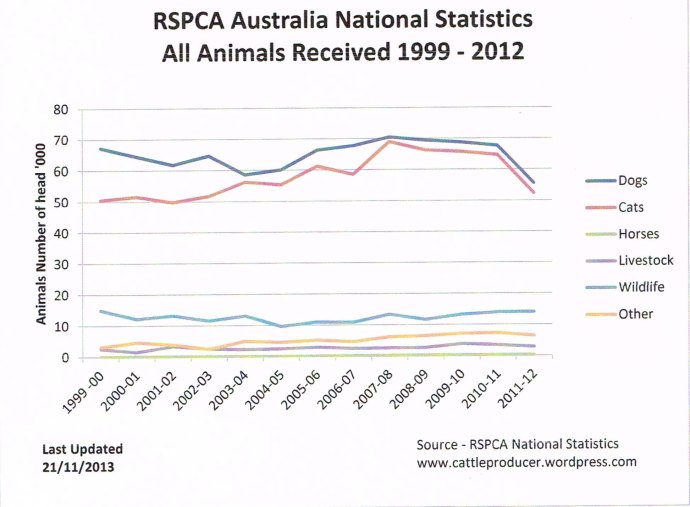 Figure 4 – RSPCA National statistics – All animals received – breakdown of groups – Dogs, cats, Horses, livestock, wildlife and Other.
Figure 4 – RSPCA National statistics – All animals received – breakdown of groups – Dogs, cats, Horses, livestock, wildlife and Other.
 Figure 5 – RSPCA Australia Animals received nationally for 2011/2012 financial year
Figure 5 – RSPCA Australia Animals received nationally for 2011/2012 financial year
 Figure 6 – RSPCA Australia National Statistics – Dogs received Nationally 2011/2012 and their destinations
Figure 6 – RSPCA Australia National Statistics – Dogs received Nationally 2011/2012 and their destinations
 Figure 7 – RSPCA Australia National statistics for Cats 2011/2012 and their destinations.
Figure 7 – RSPCA Australia National statistics for Cats 2011/2012 and their destinations.


